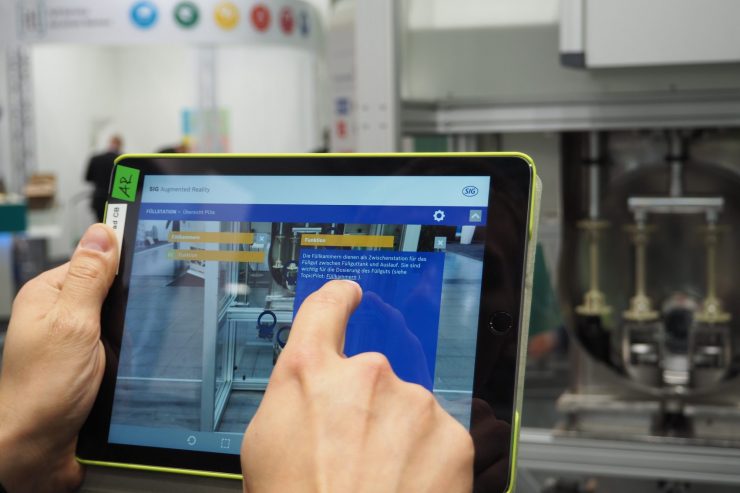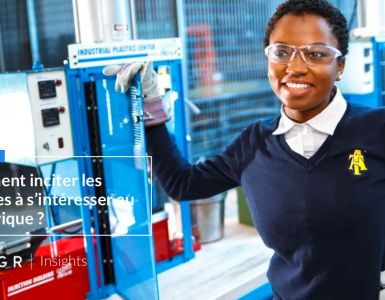With shifting economic alignments, changing customer expectations and new/less expensive technology, the executives in this industry can’t lead with just a common bottom line strategy. They need to constantly adapt to all the manufacturing changes that are happening, especially that technology is evolving faster than ever before! With Tesla unveiling their new gigafactory last week, the world is all looking forward to the future of manufacturing. In this post, I will dig a bit in the industry trend!
Research shows the manufacturing industry is going towards creating a data-driven factory of the future or what it’s been called Industry 4.0, but what does that mean exactly?
McKinsey defines Industry 4.0 as “the next phase in the digitalization of the manufacturing sector”
This trend is driven by four disruptions, let’s explore them closely!
Internet of Things (IoT)
It’s defined by The Global Standards Initiative on Internet of Things (IoT-GSI) as “a global infrastructure for the information society, enabling advanced services by interconnecting (physical and virtual) things based on existing and evolving interoperable information and communication technologies.”
In other words, and if we stick only to the manufacturing world, it’s the social network of all the physical items in a factory from buildings to sensors! Imagine every item sharing it’s personal data, imagine what you could do by mixing all the data, for example making two machines become friends and exchange data for more efficiency! The purpose is to make manufacturing a smart and automated process!
Here is a nice Infographic to understand how the trend is evolving.
Smarter, faster and cheaper Robots
Robotics is definitely something that is changing the manufacturing world. Robots are taking on more and more “human” jobs, doing simple but also more complex tasks: picking and packaging, testing or inspecting products, assembling minute electronics, etc.
According to Pwc, the main question any executive in this sphere has today is “If prices keep declining and capabilities of robotic technologies keep expanding, is now the time to hire some automated help?”Knowing China is building the first robots-only factory, this question will become more and more relevant in the upcoming years!
Augmented Reality (AR)
This would allow digital products to be projected on to the real world background, you will be able to see the product before actually creating it, and this would completely change the product design development as well as its production! It’s actually driving operational efficiency by reducing production downtime, quickly identifying problems, and keeping processes moving.
Here is a good blog post on how AR is changing manufacturing.
3D Printing (3DP)
We’ve been hearing a lot of this technology these previous years and even if it’s still really young, it may revolutionize design, development as well as production. According to Pwc, “3DP has the potential to shrink supply chains, save product development times and increase customization offerings to changing customers with expectations that products be tailored to their preferences and needs. Indeed, 3DP has arrived on the factory floor and into R&D.”
Here is good blog on how 3D Printing affects manufacturing
Those are the main trends for tomorrow’s factories. Before investing in these technologies, companies will have to identify the most important and valuable data for them to collect, as well as determine the efficacy of the analytical structures needed to assess the data.
However, they won’t be able to do that by themselves! A new futuristic factory will require a new generation of workers, with skills to take the industry to the next level! This will be the subject of my next post!







[…] or what we call today Industry 4.0 is known as the new Industrial Revolution and means using different kind of technologies (Internet of Things (IoT), Robotics, Virtual Reality (VR) and 3D Prin… to complete […]
[…] ce qu’on appelle aussi “l’industrie 4.0” ou encore la 4ème révolution industrielle, se base sur l’utilisation de différentes technologies de l’information (L’Internet des objets (IoT), la Robotique, la Réalité Virtuelle (VR) et l’impression 3D) […]
[…] the manufacturing industry. Today, we understand that before investing in these technologies (more details on the technologies behind Industry 4.0 here), companies will have to identify the most important and valuable data for them to collect and […]
[…] Read: Industry 4.0: The 4 technologies behind it […]
[…] For further information, read our article: Industry 4.0: the four technologies behind it […]